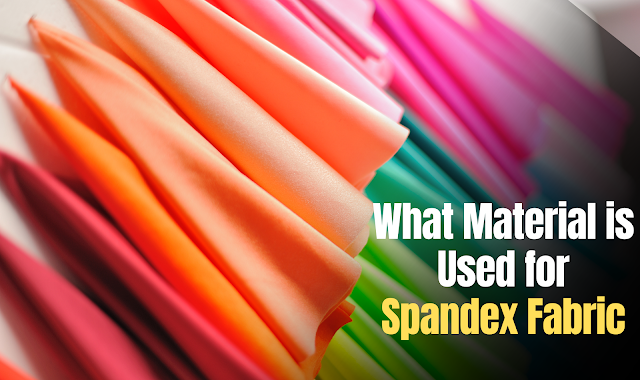Spandex is a widely popular and versatile material known for its exceptional stretchiness and form-fitting properties. It is commonly used in a wide range of applications, including athletic wear, swimwear, intimate apparel, and even furniture upholstery. But what exactly is spandex made of? In this article, we will explore the composition of spandex and its unique characteristics.
Introduction to Spandex
Spandex, also known as elastane or Lycra (a trademarked name by the company Invista), is a synthetic fiber that was first developed in the late 1950s. It was initially created as an alternative to rubber for making garments that required stretch and recovery. Spandex quickly gained popularity due to its superior elasticity and ability to retain its shape even after repeated stretching and use.
Composition of Spandex
Spandex is made from a polymer
known as polyurethane, which is a type of plastic. Polyurethane is a complex
compound made by reacting diisocyanates with diols. These diisocyanates and
diols can vary, resulting in different types of polyurethanes with varying
properties. The specific combination of diisocyanates and diols used in spandex
production determines its unique characteristics, such as stretchiness,
strength, and durability.
Read More: What are Some FunFacts about Spandex Fabric
Manufacturing Process of Spandex
The production of spandex involves several steps. First, the polyurethane polymer is created by reacting diisocyanates with diols in a chemical process called polymerization. This results in a long-chain polymer with alternating hard and soft segments. The hard segments provide strength and stability, while the soft segments give the material its elasticity.
Next, the polymer is dissolved in a solvent to create a viscous solution, which is then extruded through small holes in a process called spinning. As the solution is extruded, it solidifies into thin strands, which are then cooled and collected into a bundle known as a tow. The tow is then stretched, which aligns the polymer chains and further enhances the material's elasticity.
Unique Characteristics of Spandex
Spandex is known for its remarkable stretchiness, which allows it to be stretched up to 500% of its original length without losing its shape. It also has excellent recovery, meaning it can return to its original shape after being stretched. Spandex fabric is lightweight, soft, and comfortable to wear, making it ideal for activewear and other clothing items that require a close fit.
In addition to its stretch and recovery properties, spandex is highly resistant to moisture, chemicals, and abrasion. It is also quick-drying and retains its shape and color even after repeated washing, making it durable and long-lasting.
Applications of Spandex
Spandex is widely used in various applications due to its unique characteristics. It is commonly used in sportswear, such as leggings, swimwear, and compression garments, as it provides excellent freedom of movement and comfort during physical activities. Spandex is also used in intimate apparel, such as bras and underwear, for its stretch and form-fitting properties.
In addition to clothing, spandex is used in other industries as well. It is used in the automotive industry for seat covers, in medical applications for bandages and surgical stockings, and in furniture upholstery for its ability to provide a snug fit on furniture covers.
Conclusion
Spandex, also known as elastane
or Lycra, is a synthetic fiber made from a polyurethane polymer. It is known
for its exceptional stretchiness, recovery, and durability, making it ideal for
a wide range of applications such as athletic wear, swimwear, intimate apparel,
and upholstery. Its unique characteristics, combined with its comfort and
versatility, have made spandex a popular choice in various industries. Whether
you're wearing leggings for your workout or sitting on a sofa with spandex
upholstery, chances are you're experiencing the benefits of this remarkable
material.

Comments
Post a Comment